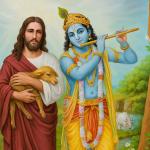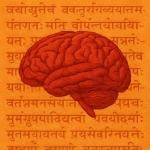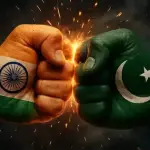Rokana
Most often the primary pre-wedding custom is called the Rokana which literally means ‘to stop’. The bride’s parents first go to the prospective grooms house. Often a very simple ceremony attended by the parents and close relatives. The Rokana is conducted upon consent of the marriage by the bride and groom’s family. The bride’s parents will often give their future son in-law a small sum of money. In turn, the groom’s parents go to the bride-to-be’s house to do the same. With them, they might bring Chhuharas (figs), mithai (indian sweets) and some money.
Chunni Chadana and Shuggun
It is time for the official engagement – also known as the shagun. Most often, it is held at the bride’s residence a couple of days before the wedding. These days, the shagun or the engagement tends to have become as elaborate as the reception; often taking place months in advance before the wedding.
.
Often, if the shagun is not done months in advance, the chuuni chadana and shagun take place usually right after one another. Kind of like a two in one deal. The chunni chadana being first and the shagun following.
The baraat or the grooms procession includes of course the groom and his family and friends. The baraat is grandly received by the bride’s family. For the ceremonies to take place, the baraat brings with them a Shagun thaal ( a silver tray which often consists of a tikka -gold jewelry worn in the hair adorning the forehead, sandoor or vermillion, make-up, perfume, a red, gold or magenta outfit and the usual dry fruits consisting of dates, almonds, raisins and misri (crystalline sugar).
During the ceremony, the groom’s sisters and sister in-laws (bhabhis) present the bride with a red duppatta/chunni/scarf. Thereafter, the groom’s mother gives the bride spoonfuls of a mixture of sugar and butter; symbolic of welcoming her into the family. Next, the bride-to-be’s hands are dabbed with mehndi (henna paste) that has been prepared by the mother in- law. These gestures signify welcoming the new bride into the family. After the chuuni chadana, the shagun takes place in which the bride and groom exchange rings.
Choora
This ceremony most often takes place the evening before the wedding. Choora the set of twenty red & ivory dotted bangles presented to bride by her maternal uncle (mama) the night before the wedding. The presenting of the bangles is another ceremony with it’s own special place of marriage customs and traditions.With guests seated on the floor and the bride sitting on small stool called a peedee, the mama dips the bangles in mixture of milk and water. This is a ritual used often in the past. Why milk? It is thought to cleanse, purify and nourish. As with religious rituals, this authenticates the auspiciousness of the occasion. The mauli (red thread) is also tied around the bride-to- be’s wrist as a form of protection to her. When the tradition first started, the mauli was used instead of engagement rings. The number of knots tied, represented the number of days remaining before the wedding.
Upon completion of the choora ceremeony, the Mama is expected to sip the milk in which the bangles were dipped; symbolic of his good wishes to his niece. At the conclusion of this ceremony, the bride is fed a Chhuhara (dry date). Unwed girls are asked (often by their eager mothers) to bite the same Chhuhara hoping that the brides bliss will rub off on the single girls and they too will be married soon.
Vatna
Shortly after the choora ceremony the vatna takes places. Vatna is a paste made of a haldi (tumeric), vesan (gram flour) and mustard oil. The yellow paste like mixture is rubbed on the brides face, arms and legs. A similar vatna ceremony takes place at the groom’s house. The vatna mixture consists of tumeric (yellow spice) which according to Ayurveda, is renowned for it’s healing and cleansing properties. It is used as part of this ceremony in an effort to cleanse and make the skin glow so that the bride and groom will look their best on their wedding day. For superstitious reasons, the bride and groom are not allowed to leave their homes after this ceremony has taken place until the wedding.
Mehndi Night
Soothing and well known for it’s cooling properties, this is just the thing to remain cool throughout the events. The mehndi night is filled with family and friends painting their hands with intricate designs of henna paste / mehndi. Often professional henna artists’ are hired to painstakingly work out the intricate details and designs on the brides hands and feet. Traditional bridal patterns include peacocks and paisleys-symbolic of passion. It is believed that the darker the henna stains the more the mother-in-law will love her new daughter-in-law.
Realistically the color that the henna stains depends on the skin texture and the quality of the henna being used. However, if the bride has the patience to leave the henna to dry on her hands for 10 hours she must have the virtue of patience which is a characteristic loved by not only mother in-laws but by everyone alike.
Ladies Sangeet
The ladies sangeet or gaun is a popular custom that further heightens wedding festivities. In the past the gaun used to last for 10 days but due to time constraints and demanding work schedules, today the gaun is usually set for one pre-set date. Although synonymous with the Bridal Shower it is equally celebrated at the groom’s house. At the bride’s home women play the dholki and sing suhaag – traditional folk songs. Songs include ‘jokes’ about the in-laws, how to have a successful marriage like and songs about the bride leaving her parents home. Likewise, similar songs called ghoriya are sung by the women at the groom’s home. Traditionally the event was exclusive to women but these days the ceremony has taken a more contemporary and lavish approach where it is often held in a banquet hall with both men and women equally invited to attend and participate.
Sehrabandi/Surma/ Kalgi
The final touches to the groom are added by his bhabhi (sister-in-law). Before leaving for the wedding venue, surma (black kohl) is used to line the eyes. The surma not only enhances the beauty of the eye (as does regular eyeliner) it was believed anything black, in particular black kohl counteracted the negative effects of the ‘evil eye’. Therefore, it was used as a way to protect the groom. In the same way, the sehra (glittering head piece constructed of gold, beads or flowers) that veils the groom’s face was used as a form of protection for the groom against evil. At the sehra bandi which is what the ceremony is called a poem titled Sehra is read to the groom. Upon completion of the ceremony the groom’s sister -in- law is presented with a monetary or gold gift.
Besides the sehra, the groom will often wear a kalgi (ornament similar to the broach most often worn on the turban). This was commonly worn in the past by Royalty. Dressed like a king the groom prepares for the next ceremony.
Ghori Ceremony
The tradition of the ghori (mare) is becoming popular once again. In the past the mare was used as a means of transportation to the wedding venue. It was often adorned with decorations and ornaments. The groom would be dressed in his wedding attire, carrying a sword (used to protect the bride in case of an attempted abduction). Alongside the groom often there is often his sarbala or his ‘best man’ (usually a younger brother, cousin or nephew) who acts as his caregiver.
Although these days, most grooms come ushered in a limousine or other automobile to there wedding venue, some still prefer to ride the mare to the location of the ceremony – even if it only a distance of a few feet. where they
will meet their bride to be. Perhaps it is a depiction of the idea of the ‘knight in shining armor’ – fairytale, where the prince is coming to takeaway his beautiful princess. As the groom rides his horse, the barat (members of the grooms party) engage in dhol (drum) playing, dancing and
fireworks.
Milni
The milni is the formal meeting of the groom’s family with the brides family. Usually a formal introduction between each of the male members of the family is made. One person from the bride’s family and one person from the groom’s family is called upon by the religious officiate. For example, father meets father, chacha (father’s brother) meets chacha, brother meets brother, etc. The family members are introduced formally, shake-hands or embrace and exchange garlands and gifts. These days, the milni ceremony also incorporates a formal introduction of the women. In the past, this ceremony took place several days before the wedding but due to time constraints, it usually takes place on the morning of the wedding. Special gifts of gold, money (salami), blankets, dry fruit and sweets (mithai) are given to the grooms family.
Ferre / Anaand Karaj/ Saptpadhi/Nikah
The actual ceremonies depend on specific religious beliefs, background and what regional area of India the family is from. Consult your local religious official to get more details of the exact procedures and ceremony. Check back for updates to this section.
Doli / Vidaii
This is marked as one of the ‘tear-jerker’ of the wedding festivities. It is the official departure of the bride from her parents’ home. On the lighter side of this ceremony is awarding the saalis (sister in-laws) with a kalichari- gold or silver ring ) for returning the groom’s shoes which were hidden after the marriage ceremony as a joke. As she leaves her house she embraces her family and friends just as one would do at airport when leaving for a long trip.
As she steps outside the door,, she throws back five handfuls of rice over her head. As you have probably noticed, rice is used abundantly throughout various ceremonies – most likely because rice is symbolic of prosperity and wealth. By throwing rice back, she symbolically states that she is returning what her parents have given her all the years she stayed with them and that may the prosperity flourish in the house she is now leaving.
When the car pulls away slowly, the brides brothers and cousins will push the car signifying that they have given her a push ahead as she begins her new life with her husband. After the last car departs, money is thrown on the road to ward off evil. Most often a younger brother or cousin will go with the bride to groom’s house to offer her moral support.
Grooms Home
Pani Varna – “Pani vaar banne di maye, bana tera, bahar khada…” This is when the grooms mother performs aarti with a pitcher of water around the newlyweds heads. She is suppose to sip from the jug of water each time. The groom is suppose to try to stop her each time, allowing her to sip the water only on the seventh time. It is one of the past customs in which the groom informs his mother that there is another contender for his love – his new wife.
Before entering the groom’s home, the bride is often asked to knock over a vial of mustard oil or an urn of rice with her right foot as she steps into the house. Her first step is considered auspicious. According to Hindu mythology the new bride is considered ghar ki lakshmi (a goddess representing prosperity). Also, by her touching the rice urn with her right foot she acknowledges her understanding of the responsibilities towards her new home
Blessing
Matha tekna / Aashirvaad is when the bride and groom (touch the feet of the elders) asking for their blessings.
Reception: Sky’s the limit!
Phera Pana
The newly weds return to the brides home usually the day after the wedding for a luncheon.











